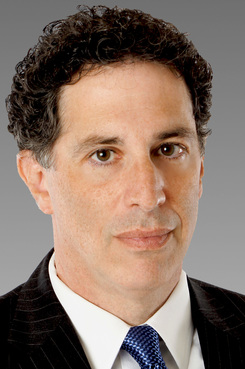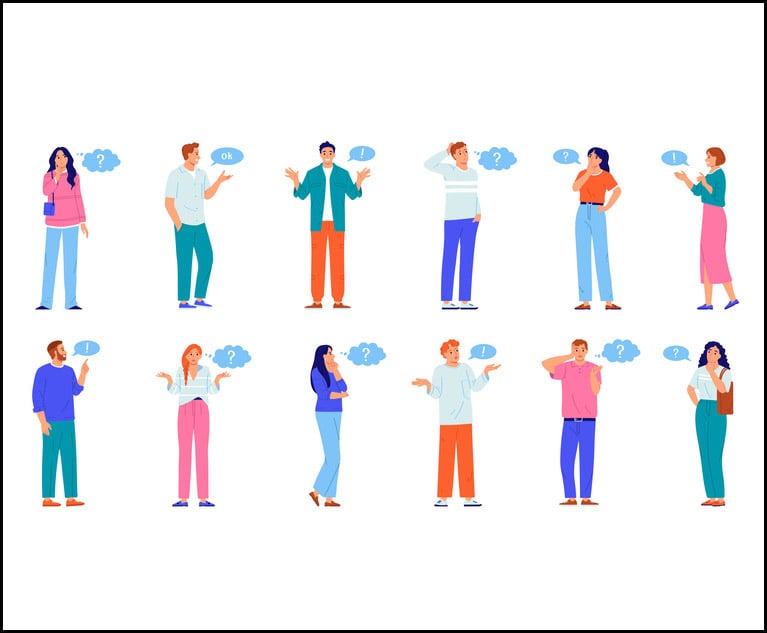2017 Patent Applications Can Predict Innovations of the Future
As companies develop new ideas, they often file patent applications with various patent offices in order to protect their investments. Here are a few patents (and patent applications) that were published in 2017 and that may predict how innovation will influence the future.
December 27, 2017 at 04:20 PM
7 minute read

Predicting the future is normally reserved for fantasy or science fiction, but it is possible to learn about tomorrow's technology by looking at patents. As companies develop new ideas, they often file patent applications with various patent offices in order to protect their investments. Here are a few patents (and patent applications) that were published in 2017 and that may predict how innovation will influence the future.
Cloaking Device (U.S. Patent Application 2017/0227781)
It might sound too good to be true, but the world's first cloaking device has finally arrived! Toyota has discovered how to make solid opaque objects disappear. The technology uses mirrors to allow a driver to see outside of his or her car without obstructions blocking the view. The technology is particularly useful to enable vehicle occupants to see “through” the corners of the vehicle where the front or rear windshield meets the the side of the car. The invention allows someone outside of the vehicle to be easily seen regardless of where they are standing.
Flexible smartphones (U.S. Patent Application 2017/0294495)
The bendable smartphone came one step closer to reality, with this flexible smartphone patent application that was filed by Apple. Manufacturers having been trying for several years to develop a phone that can be folded along the middle of the display without developing cracks or tears. A number of these patent applications have been filed in recent years, so expect to see this technology available for purchase in the near future.
Microlenses (U.S. Patent Application 2017/0261651)
The microlens is a new technology in which tiny lenses are fabricated on a semiconductor computer chip. In this patent application, an array of microlenses is disclosed, in order to create a camera that is incredibly thin. One camera that is currently on the market packs 26.2 million of these miniature lenses onto a single chip. The technology can be used in smartphones and tablets to create cameras that produce pictures with incredible quality and resolution.
Controlling Weather on Mars (Russian Patent 2617591)
Colonizing Mars will be an incredible challenge for many reasons, including the extreme cold. A Russian scientist believes he has invented a method of heating the Martian atmosphere. Using mirrors and optical devices to focus the sun's energy onto the Martian surface, natural carbonates are heated in order to release carbon dioxide into the Martian atmosphere. The result is that clouds are created, and the temperature of the Martian atmosphere increases. One of the legally troubling issues is that a patent is only enforceable in the country in which the patent was granted (i.e., a Russian patent is only enforceable in Russia, and nowhere else). How, therefore, does this Russian patent owner plan to enforce his patent on Mars? The answer to that question is a true mystery.
Removable Pedals and Steering Wheels (U.S. Patent Application 2017/0225570)
Self-driving vehicles are already appearing on roadways throughout the world. Because the driver is no longer controlling the vehicle, a steering wheel and a brake pedal are no longer needed. It's not so simple, however, to simply remove these items from a vehicle. For example, the airbag is deployed from the steering wheel, and a vehicle without a steering wheel would have no driver-side airbag. Also, some individuals may be uncomfortable riding in a car that has no steering wheel, and may desire to be able to control the vehicle at will. Ford has invented a steering wheel that is easily detachable from the dashboard. Vehicle passengers may use or remove the steering wheel depending upon their preferences. The airbag has been repositioned in the dashboard, so that it is always present whether or not a steering wheel is being used.
Pedestrian Airbag (U.S. Patent Application 2017/0217400)
Airbags are amazing devices that protect the occupants of a car. But, if a car strikes a pedestrian, the collision may be fatal. Daimler has invented an airbag that is located on the outside of a car. If a person collides with the vehicle, the airbags are deployed in order to minimize injury. In addition, collision causes the hood of the car to slightly raise and shift position in order to provide the injured pedestrian with further protection.
Delivery Chute (US Patent 9,731,839)
The use of drones to deliver packages has already been tested in the United Kingdom, and it is only a matter of time before this technology is used for package delivery anywhere in the world. Amazon has patented a “chute” that extends from the bottom of a package-carrying drone. Once the drone reaches the drop off location, the chute is extended, and the package is released into the chute and allowed to fall to the ground. The chute includes accordion-style ridges that slow the descent of the package in order to avoid damage. The chute also dampens noise from the drone's motors as the drone hovers near homes and businesses.
Huggable Robot (U. S. Patent Application 2017/0095925)
As robot interaction with humans continues to increase, robots and humans are bound to make physical contact. Robots, however, include motors or pneumatics that produce great force and put people at risk of significant injury. Disney has invented a huggable robot that relies on various fluids to operate its joints. If the robot comes into contact with a human, then sensors detect pressure changes in order to limit movement. The robot includes a soft forearm or chest that deforms. Robot joints include a feature called “compliance” that enables them to be slightly wiggled in order to increase flexibility and safety.
Drone Hive (US Patent Application 2017/0175413)
If drones are the future of package delivery, many drones will need to visit a warehouse in order to service the multitude of customers expecting packages. To be near many customers, however, warehouses will need to be located in major urban areas. If the warehouse is in a congested area, how will many drones be able to arrive and depart? Amazon has invented a drone hive that allows drones to simultaneously land and take off from multiple locations. Because the hive is multiple stories, each drone can land at a different level, accept a package, and take off for the next delivery.
Electric Car Battery Temperature Control (US Patent Application 2017/0096073)
Tesla continues to improve the design of electric cars, but charging the battery has always been problematic, particularly when the battery is being charged quickly. Tremendous amounts of heat are generated, that if not dispelled can create significant damage.Tesla has invented an external temperature control device for cooling an electric car's battery during charging. A cooling system includes tubes that have coolant circulating with. The car, while charging, is parked above the tubes in order to keep the battery cool and safe
Immersive Display (U.S. Patent 9,681,096)
Current videoconferencing technology provides the ability to see a person on a screen, but the image is static and two-dimensional. An observer looking at a video screen sees the same image regardless of where the observer is standing. Not so in real life. If an observer looking at a subject moves downward, the observer will see the bottom of the subject's chin. If the observer moves upward, the top of the subject's head will become visible. Apple has invented a display that tracks an observer's position, and changes the view of a subject on a screen depending upon where the observer moves. Thus, a 3-D view of the subject is obtained. The technology is useful for videoconferencing to provide extraordinary screen views of each participant in 3-D.
Lawrence E. Ashery is a partner in the Philadelphia office of Caesar Rivise. He focuses his practice on all aspects of intellectual property law. He can be reached at [email protected].
This content has been archived. It is available through our partners, LexisNexis® and Bloomberg Law.
To view this content, please continue to their sites.
Not a Lexis Subscriber?
Subscribe Now
Not a Bloomberg Law Subscriber?
Subscribe Now
NOT FOR REPRINT
© 2025 ALM Global, LLC, All Rights Reserved. Request academic re-use from www.copyright.com. All other uses, submit a request to [email protected]. For more information visit Asset & Logo Licensing.
You Might Like
View All

AI and Social Media Fakes: Are You Protecting Your Brand?

Neighboring States Have Either Passed or Proposed Climate Superfund Laws—Is Pennsylvania Next?
7 minute read
Seven Rules of the Road for Managing Referrals To/From Other Attorneys, Part 2
6 minute readTrending Stories
- 1Uber Files RICO Suit Against Plaintiff-Side Firms Alleging Fraudulent Injury Claims
- 2The Law Firm Disrupted: Scrutinizing the Elephant More Than the Mouse
- 3Inherent Diminished Value Damages Unavailable to 3rd-Party Claimants, Court Says
- 4Pa. Defense Firm Sued by Client Over Ex-Eagles Player's $43.5M Med Mal Win
- 5Losses Mount at Morris Manning, but Departing Ex-Chair Stays Bullish About His Old Firm's Future
Who Got The Work
J. Brugh Lower of Gibbons has entered an appearance for industrial equipment supplier Devco Corporation in a pending trademark infringement lawsuit. The suit, accusing the defendant of selling knock-off Graco products, was filed Dec. 18 in New Jersey District Court by Rivkin Radler on behalf of Graco Inc. and Graco Minnesota. The case, assigned to U.S. District Judge Zahid N. Quraishi, is 3:24-cv-11294, Graco Inc. et al v. Devco Corporation.
Who Got The Work
Rebecca Maller-Stein and Kent A. Yalowitz of Arnold & Porter Kaye Scholer have entered their appearances for Hanaco Venture Capital and its executives, Lior Prosor and David Frankel, in a pending securities lawsuit. The action, filed on Dec. 24 in New York Southern District Court by Zell, Aron & Co. on behalf of Goldeneye Advisors, accuses the defendants of negligently and fraudulently managing the plaintiff's $1 million investment. The case, assigned to U.S. District Judge Vernon S. Broderick, is 1:24-cv-09918, Goldeneye Advisors, LLC v. Hanaco Venture Capital, Ltd. et al.
Who Got The Work
Attorneys from A&O Shearman has stepped in as defense counsel for Toronto-Dominion Bank and other defendants in a pending securities class action. The suit, filed Dec. 11 in New York Southern District Court by Bleichmar Fonti & Auld, accuses the defendants of concealing the bank's 'pervasive' deficiencies in regards to its compliance with the Bank Secrecy Act and the quality of its anti-money laundering controls. The case, assigned to U.S. District Judge Arun Subramanian, is 1:24-cv-09445, Gonzalez v. The Toronto-Dominion Bank et al.
Who Got The Work
Crown Castle International, a Pennsylvania company providing shared communications infrastructure, has turned to Luke D. Wolf of Gordon Rees Scully Mansukhani to fend off a pending breach-of-contract lawsuit. The court action, filed Nov. 25 in Michigan Eastern District Court by Hooper Hathaway PC on behalf of The Town Residences LLC, accuses Crown Castle of failing to transfer approximately $30,000 in utility payments from T-Mobile in breach of a roof-top lease and assignment agreement. The case, assigned to U.S. District Judge Susan K. Declercq, is 2:24-cv-13131, The Town Residences LLC v. T-Mobile US, Inc. et al.
Who Got The Work
Wilfred P. Coronato and Daniel M. Schwartz of McCarter & English have stepped in as defense counsel to Electrolux Home Products Inc. in a pending product liability lawsuit. The court action, filed Nov. 26 in New York Eastern District Court by Poulos Lopiccolo PC and Nagel Rice LLP on behalf of David Stern, alleges that the defendant's refrigerators’ drawers and shelving repeatedly break and fall apart within months after purchase. The case, assigned to U.S. District Judge Joan M. Azrack, is 2:24-cv-08204, Stern v. Electrolux Home Products, Inc.
Featured Firms
Law Offices of Gary Martin Hays & Associates, P.C.
(470) 294-1674
Law Offices of Mark E. Salomone
(857) 444-6468
Smith & Hassler
(713) 739-1250





